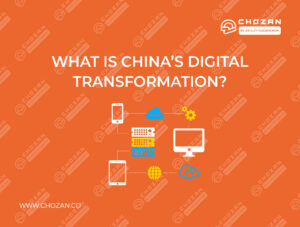China has grown to be one of the largest economies in the world. With a population of 1.4 billion, consumer brands in China are growing at a fast pace and shortening the time to the maturity stage compared to traditional brands that have been developing for decades.
But there are changes in core customers, purchase habits, needs and marketing channels. The rules are changing in the new consumption age. Emerging consumers care more about the quality, fun and innovation. According to a survey, more than half of the younger generation in China prefer personalized products, customized services and online ordering.
The years since 2020 have been a boom time for emerging brands in China. Data shows that in 2021, more than half of emerging brands doubled sales during the 618 Shopping Festival on JD.com. This means that 459 new brands ranked No.1 in their categories on Tmall.
Below are 9 innovations from DTC brands in China that are building strong foundations for products, marketing and commerce. Brands can learn how to start from scratch, develop products quickly and market their brands efficiently using social and video platforms. Neither online nor offline channels can be ignored.
Products: Upgrading for the new consumption era
Product power shows how well a brand understands consumer insights and market trends, and shows if they know how to make products that solve real consumer problems.
Create a new track for a product, from zero to one.
Chinese consumers are looking for new products to express themselves and improve their quality of life. By creating a new track for a product, it avoids fierce market competition and it’s easier to attract customers.
For example, NYSCPS (in Chinese. 参半 “canban”) was established in 2018, opening a new market for oral care products containing probiotics. Since China shows a lot of potential for mouthwash sales, NYSCPS launched a mouthwash that hit Number 2 on Taobao for sales in its category. This was mostly because the brand had noticed the increasing oral care needs of consumers.
Centering on the “fast consumption” concept, it repositioned itself as a popular oral care brand for specific needs, as opposed to traditional oral care brands that have generalized products for a few basic issues. From there, it pursued large launches of single products for specific needs.
Find emerging niche categories in the market
Beverages are a narrow sector with strong market leaders like Coca Cola. How can a brand create room for itself and new products to survive?
Chi Forest came onto the market in just a few years and took an increasing share of voice and sales. It started with zero sugar beverages, which led the market by introducing a concept that was new to China and met the desires for healthier drinks from consumers. Innovative recipes for no sugar colas and soda water also became hot new products.
Use a software mindset to launch hardware products
This concept is about creating a new product and launching it as soon as possible then updating it later with new versions and expanded options.
Smartphone manufacturers use this method. So do electric car manufacturers. AVATR is a Chinese EV brand from Huawei and other partners. They provide big monthly updates and small weekly updates for consumers. This iterative strategy enables product manufacturers to acquire users at the fastest speed and optimize products with frequent updates to improve user satisfaction.
Screenshot from official website
Focus on a single product or category to enhance brand awareness
Star products give a brand more publicity and awareness when it comes to future purchase and repurchase decisions.
Take Xiaomi for example. It has launched different smart devices such as a SmartTV, a Smart Speaker, and has even cooperated with other IoT partners. However, when the brand name comes to mind, it’s always about smartphones. It has a strong image as a great, affordable smartphone manufacturer.
Pop toy manufacturer PopMart also created its mascot Molly to represent its niche toy products while connecting with young people who want to express their personality and style.
Source from official website of Xiaomi and PopMart
Data-based, highly targeted marketing (Uni marketing)
The essence of dealing with public traffic, which is the same traffic that all other brands have access to, is to spend money on exposure. This is what advertising does well, but how can brands economize on ad spending or make their ad budgets go farther? When it comes to online platforms, brands are always wondering, where are traffic costs lower?
Growing platforms have better ROI compared to the mature ones. This is the situation WeChat Channels, which is for video, is in now.
Private traffic, which a brand has direct reach to and a special relationship with, is essential for successful e-commerce, especially social commerce. Data collected by brands plays an important role in filtering consumers and tracking the effects of their marketing. Brands with this kind of direct reach and data can develop new products based on first-hand consumer data and insights from their close connection with consumers.
Luckin Coffee maintains relationships with 1.8 million private domain consumers, who consume 35,000 cups per day. Luckin Coffee brings users from the public to the private domain through its many offline stores, online advertising and more. It keeps reaching users in the private domain through new products and special offers to motivate them to make repeat purchases, while encouraging old users to share and bring in more private traffic by sharing coupons with new users.
Health trends continue in 2023
Health will continue to be important for Chinese consumers in 2023. The pandemic brought home how important our health is which brought fitness and other health improvements to the fore.
Livestreamer Will Liu seized the fitness at home trend and gained lots of followers in a short time. This trend will continue in 2023 as Covid continues to affect the population. Marketing trends focusing on health improvement will be effective.
E-commerce remains in a period of growth
China is one of the largest e-commerce markets in the world in terms of volume. According to market research firm Insider Intelligence, approximately 1 billion Chinese consumers will shop through e-commerce channels in 2022, accounting for 45.3% of all online retail sales. 2023 will continue to be characterized by growth.
There are even more e-commerce platforms and local purchase services for consumers to choose from. Cooperations with platforms and promotions with platform-driven shopping events benefit brands with exposure and sales. Some examples of these are Douyin’s Beauty Day and Taobao’s Low-carbon Initiative.
Recycling initiatives are a sign of social responsibility and draw for socially conscious customers
Changes in the Chinese consumer environment are driving industry to create new product design concepts based on the function and quality of the product and are spurring the desire to create consumer goods that continue to work.
SATURNBIRD COFFEE was established in 2015. When it’s open, users can go to designated return points to exchange empty coffee machine capsules for themed materials. Over the past six years, they collected 13,671,400 empty coffee pods. By recycling the brand’s empty capsules, SATURNBIRD is doing its job for the public good and the environment while making a strong impression on young consumers.
Build offline sales channels after establishing the brand online
Offline channels should rapidly expand their exposure in the short term to make it easier for consumers to find them and improve the ease of purchase for users.
BackTime is a light health care brand established in 2020. The brand developed a series of products such as steam eye masks, neck warmers and waist warmers to solve ache and fatigue issues for young people.
After more than three years of development, BackTime has developed a mature online channel. By 2022, BackTime began to build its offline channels. Last September, they established an outlet in the Gaoxin retail system (RT-Mart, Taoxianda, Hexiaoma) which is in the Alibaba Group.
Conclusion
Brands have plenty of options at their fingertips as trends shift in 2023. They can create new products, find emerging niche categories, develop products with a software mindset, focus on a star product to enhance brand awareness and build from there.
In terms of marketing, detailed consumer targeting, scenario marketing, and new kinds of search and a focus on health are trends that consumers value in 2023.
E-commerce is in a period of growth with livestreaming and social e-commerce continuing to dominate. Offline recycling and environmental protection continue to be important, and last but not the least, offline sales channels.
These are some of China’s most prominent product, marketing and commerce trends this year. Take a look and see what you can implement in your business. If your brand needs help and guidance we can help with training tailored to your specific needs or answer your most urgent questions on an expert call or a series of consultation sessions. Contact us and we’ll arrange a chat to find out what you need and move forward from there.
Read more related posts
-
3 Lessons for Brands: Mastering Virtual Marketing and AI Strategies in China
In China, brand marketing that uses virtual and AI technologies is having an increasingly major impact on purchasing decisions, as customers seek new and interesting experiences. AIGC (artificial intelligence-generated content)…
-
3 Lessons for Brands: Mastering Virtual Marketing and AI Strategies in China
In China, brand marketing that uses virtual and AI technologies is having an increasingly major impact on purchasing decisions, as customers seek new and interesting experiences. AIGC (artificial intelligence-generated content)…
-
3 Lessons for Brands: Mastering Virtual Marketing and AI Strategies in China
In China, brand marketing that uses virtual and AI technologies is having an increasingly major impact on purchasing decisions, as customers seek new and interesting experiences. AIGC (artificial intelligence-generated content)…
-
3 Lessons for Brands: Mastering Virtual Marketing and AI Strategies in China
In China, brand marketing that uses virtual and AI technologies is having an increasingly major impact on purchasing decisions, as customers seek new and interesting experiences. AIGC (artificial intelligence-generated content)…
-
China’s Growing Love Affair With Sports: 3 Trends for Sports Marketing in China?
Sports and exercise have always played a prominent role in Chinese life. What are the newest sports marketing in China? Although it has traditionally taken a backseat to academics for…






